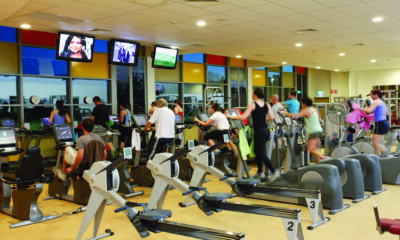Health
How to prevent leg cramps while running
Any runner will tell you that leg cramps are the worst. They strike out of nowhere, and can quickly put a damper on your run. If you’re looking for ways to prevent leg cramps while running, you’ve come to the right place. In this blog post, we’ll share some tips and tricks on how to avoid those pesky cramps. From staying hydrated to stretching properly, read on for everything you need to know about preventing leg cramps while running.
What are leg cramps?
There are a few things that can cause leg cramps while running, such as dehydration, electrolyte imbalance, or overuse. To prevent leg cramps, it is important to stay hydrated during and after your run and to warm up and stretch properly before starting. You may also want to consider using a sports drink with electrolytes to help keep your levels balanced. If you are prone to cramping, slowly increase your mileage and intensity to give your body time to adjust. Finally, listen to your body and take breaks when needed. If you start to feel a cramp coming on, stop and stretch the affected muscle.
How to prevent leg cramps while running
If you’re a runner, you know that leg cramps can be a real pain—literally. They usually strike when you least expect them, and can quickly turn a pleasant run into a frustrating one.
There are a few things you can do to prevent leg cramps while running. First, make sure you warm up properly before starting your run. A good warm-up will increase blood flow to your muscles and help prevent cramps.
Second, stay hydrated during your run. Leg cramps are often caused by dehydration, so make sure you’re drinking plenty of water or sports drink.
Finally, if you feel a cramp coming on, stop running and stretch the muscle that’s cramping. If the cramp is severe, walk it off until the pain subsides. By following these simple tips, you can help prevent leg cramps and keep running enjoyable.
Prevention tips for leg cramps
There are several things you can do to prevent leg cramps while running. First, make sure you warm up properly before your run. A good warm-up will increase blood flow to your muscles and help prevent cramping.
Second, stay hydrated during your run. Dehydration is a common cause of leg cramps, so be sure to drink plenty of fluids.
Third, avoid running in hot weather. The heat can contribute to dehydration and make leg cramps more likely. If you must run in the heat, take frequent breaks and drink plenty of fluids.
Fourth, wear proper shoes and socks. Ill-fitting shoes or socks that bunch up can cause leg cramps. Make sure your shoes fit properly and wear socks that are comfortable and don’t bunch up.
Finally, listen to your body. If you start to feel a leg cramp coming on, slow down and take a break if possible. Leg cramps are often caused by overexertion, so resting will usually help relieve the pain.
When to see a doctor for leg cramps
If you experience leg cramps while running, it is important to see a doctor to rule out any underlying medical conditions. Some potential causes of leg cramps during running include dehydration, electrolyte imbalances, and muscle fatigue. If you are experiencing leg cramps, be sure to drink plenty of fluids and stretch your muscles before and after your run. If leg cramps persist, see a doctor to determine the cause and develop a treatment plan.
Causes of leg cramps while running
There are many potential causes of leg cramps while running. Some of the most common include:
-Dehydration: Dehydration is a common cause of leg cramps, especially in hot weather or during intense exercise. Be sure to drink plenty of fluids before and during running to prevent this.
-Electrolyte imbalance: An imbalance of electrolytes (such as sodium, potassium, and magnesium) can also lead to leg cramps. This is often seen in runners who sweat heavily or those who don’t replenish their electrolytes adequately after running.
-Muscle fatigue: Overworked muscles can easily become fatigued and start to cramp up. This is especially common in beginners or those returning to running after a break. Be sure to gradually increase your mileage and pace to allow your muscles time to adjust.
-Poor warm-up: A proper warm-up is important for all types of exercise, but it’s especially crucial before running. Doing some light stretching and jogging beforehand can help prevent leg cramps by getting your muscles ready for the activity ahead.
Effects of Leg Cramps on Health
Most people have experienced the occasional leg cramp, and while they may be painful, they are usually not a cause for concern. However, for some people, leg cramps can be a regular occurrence that can negatively impact their health.
There are a few potential causes of leg cramps, such as dehydration, electrolyte imbalance, muscle fatigue, or poor blood circulation. However, the most common cause is simply overuse of the muscles. This is often seen in athletes or people who are very active and don’t give their muscles enough time to recover between workouts.
While leg cramps may not seem like a big deal, they can actually lead to serious health problems. For example, chronic leg cramps can cause insomnia and anxiety, which can impact overall mental health. Additionally, if the cramps are severe enough, they can cause bruising or even break bones.
Overall, leg cramps can have a significant negative impact on health. If you experience them regularly, it’s important to talk to your doctor to rule out any underlying medical conditions and to develop a plan to prevent them in the future.
Treatments for leg cramps
There are many different treatments for leg cramps while running. Some of the most common include:
Stretching: This is one of the most effective treatments for leg cramps. It helps to lengthen the muscles and relieve the tension that is causing the cramp.
Massage: This can help to loosen the muscles and relieve the pain of a leg cramp.
Ice: Applying ice to the area can help to reduce swelling and pain.
Heat: Applying heat to the area can help to loosen the muscles and improve blood flow.
Compression: Wearing compression socks or wrapping the affected area can help to reduce swelling and pain.
Medication: There are several medications that can be taken to help relieve leg cramps, including over-the-counter options like ibuprofen and aspirin.
Conclusion
There are a few things you can do to prevent leg cramps while running. First, make sure you warm up properly before starting your run. Additionally, drink plenty of fluids during and after your run to stay hydrated. Finally, if you feel a cramp coming on, slow down and stretch out the affected muscle. By following these tips, you can help prevent leg cramps and have a successful run.
-

 Fashion8 months ago
Fashion8 months agoFashion designing scope in Pakistan
-

 Lifestyle4 months ago
Lifestyle4 months agoLifestyle photography ideas in 2022
-

 Lifestyle4 months ago
Lifestyle4 months agoCowboy Hat Styles and Their Creases
-

 Sports5 months ago
Sports5 months agoBest sports to play in high school
-

 Sports8 months ago
Sports8 months agoTop 10 Best Gyms In The World
-

 Tech5 months ago
Tech5 months agoHow to Fix League of Legends Disconnecting on Windows
-

 Health4 months ago
Health4 months agoHow to gain muscle for skinny guys at home
-

 Business4 months ago
Business4 months agoHow to start a real estate investment company